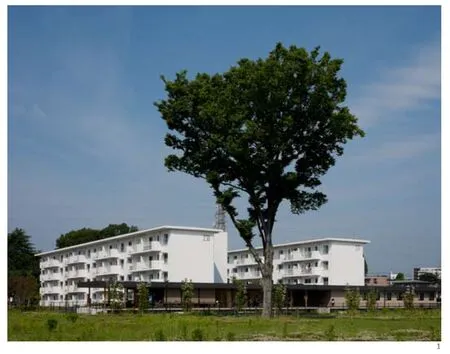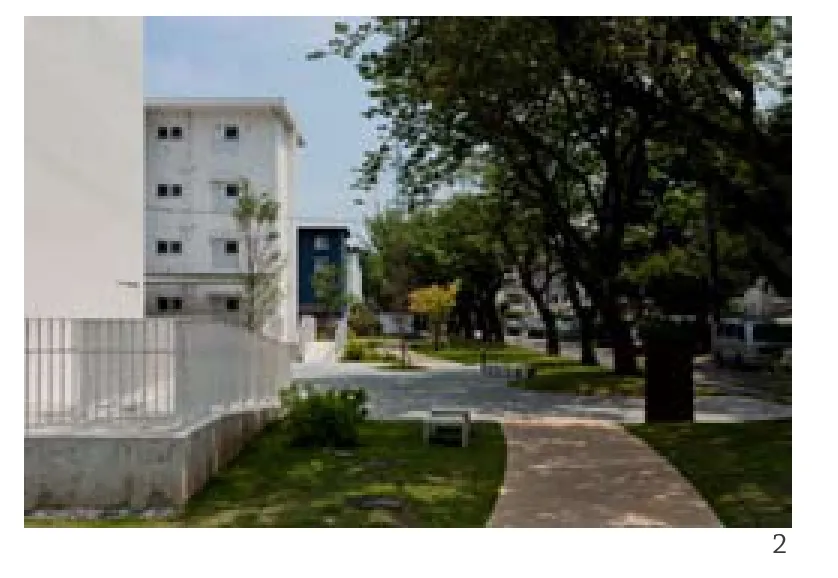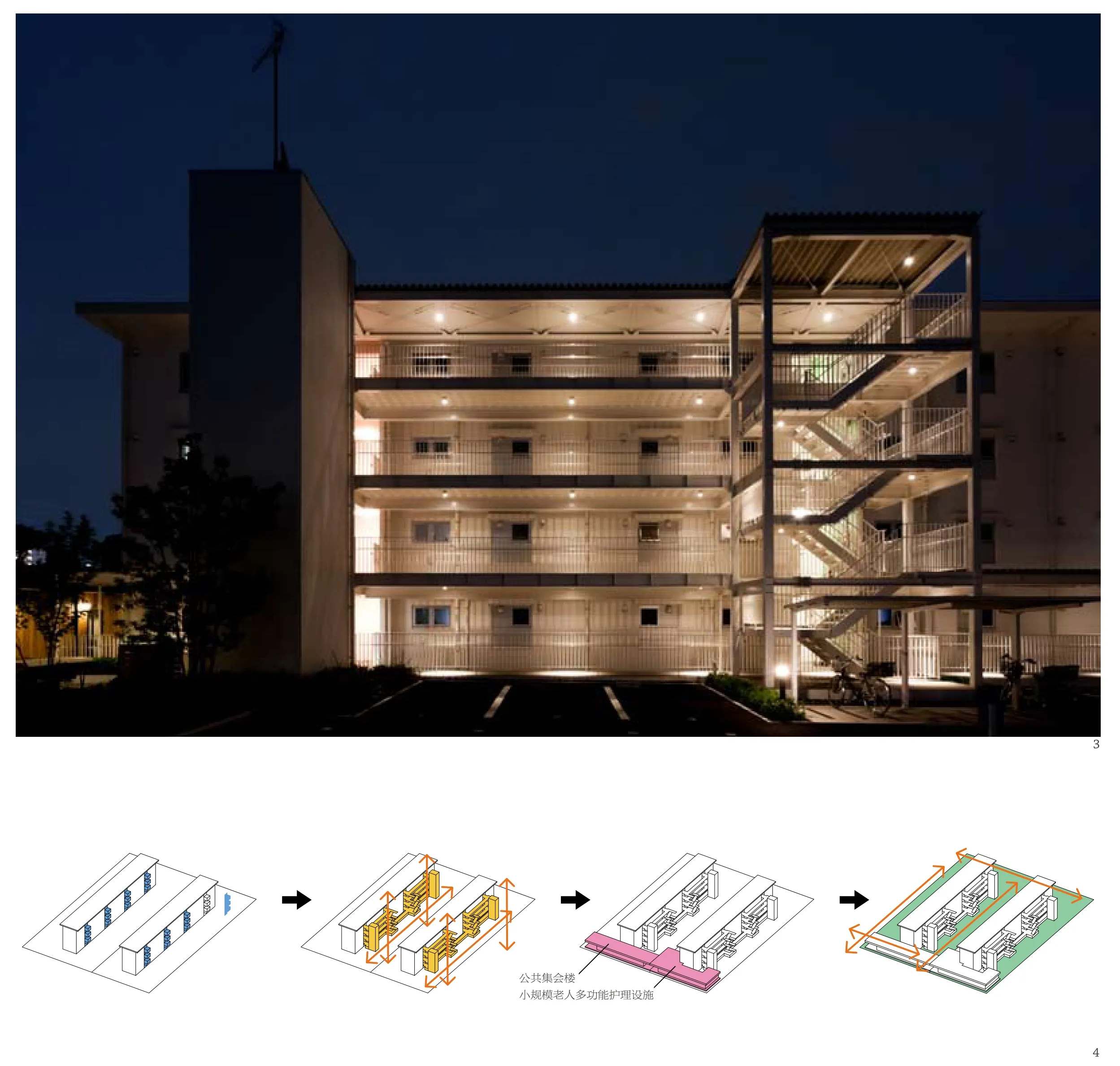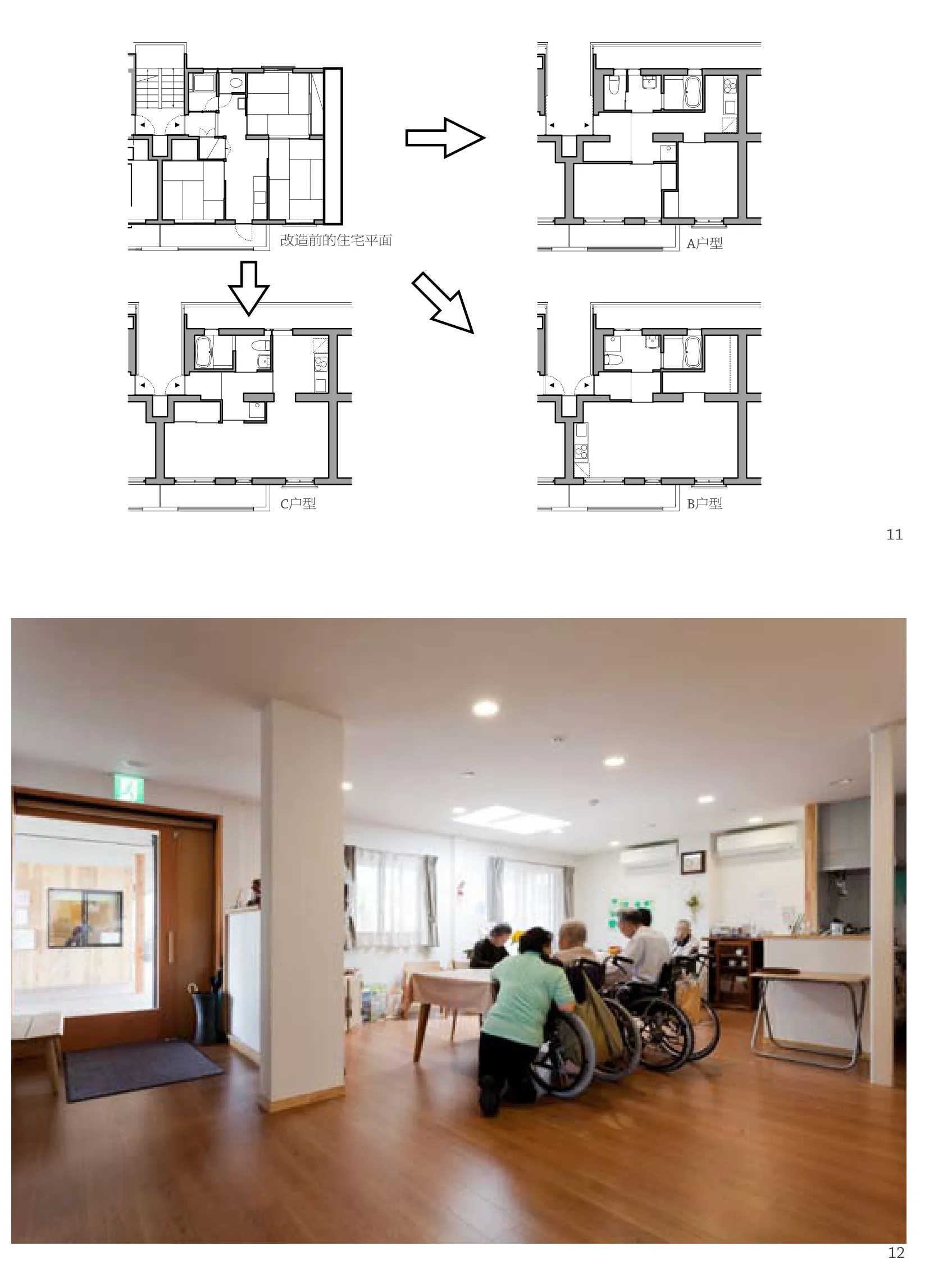多摩平之森互助之家,日野,东京,日本
2015-10-28建筑设计NEWOFFICE
建筑设计:+ NEW OFFICE
多摩平之森互助之家,日野,东京,日本
Yuimarl Tamadaira No Mori,Hino,Tokyo,Japan,2011
建筑设计:+ NEW OFFICE

1 外景/Exterior views
项目信息/Credits and Data
主持建筑师/Principal Architects: 濑户健似,近藤创顺/ Kenji Seto,Sojun Kondo
结构设计/Structural Design: 我伊野构造设计室/G.DeSIGN暖通和机械设计/HAVC & Mechanical Design: ymo
电气设计/Electrical Design: EOS plus
景观设计/Landscape Design: on site规划设计事务所/ studio on site
场地面积/Site Area: 一号馆/Building No.1: 1976.76m2,二号馆/Building No.2: 2648.56m2
基底面积/Building Area: 一号馆/Building No.1: 715.02m2,二号馆/Building No.2: 684.26m2
在新时期培养学生核心素养是多个方面因素综合作用的结果,尤其是在素质教育全面深入的背景下,更是受到高度重视,在实践分析之后我对其现状作如下分析:
建筑面积/Floor Area: 一号馆/Building No.1: 1808.14m2,二号馆/Building No.2: 1821.50m2
建筑密度/Building Density: 一号馆/Building No.1: 36.17%(上限/Upper Limit: 60%),二号馆/Building No.2: 25.83%(上限/ Upper Limit: 60%)
容积率/Floor Area Ratio: 一号馆/Building No.1: 0.81(上限/Upper Limit: 1.5),二号馆/Building No.2: 0.59(上限/ Upper Limit: 0.6)
层数/Floor Number: 4
设计时间/Design Period: 2010.04-2010.12
建造时间/Construction Period: 2011.01-2011.09
摄影/Photos: Studio Bauhaus
这一项目由民企对UR都市机构在1950年代建造的公营住宅进行改造而来。项目中,5栋原有的空置住宅楼被划分为3个片区,分别由3家民企承租15-20年,并按照各自的方案进行改造。“多摩平之森互助之家”是其中之一,以“创造直到人生的最后也能活出自我的社区”为主题,将其中的两栋住宅改建成了老年公寓。
这一住区长达50年的历史孕育了绿意盎然、如同公园一般的室外空间,设计利用这一点,在室外各处为居住者的生活准备了热闹但又祥和的聚集场所。在公营住宅特有的东西向建筑体量中,设计又加入了南北向的小规模多功能护理设施和公共集会楼两栋建筑,在联系起两侧住宅的同时,也给予了老住宅区新的风貌。尤其是集会楼,由于面向内部广场的立面完全采用了玻璃幕墙,人们在建筑外也能看到内部的活动,使这里成为面向社区开放的场所。
任何人都可以进入基地,集会楼里的图书角和食堂能为附近居民休息所用,环绕基地的小道也是周边幼儿园小朋友们的散步路线,居住者们因此能自然地与周边的居民产生交流。
在建筑的内部,在拆除原来的楼梯后,通过增设电梯和公共走廊实现了竖向交通的无障碍化,也让改造前建筑北侧沉闷的空间成为居住者的交通空间和进行日常交流的场所。此外,建筑原来的钢混结构框架得到了保留,对其他部分则进行了屋顶防水、外墙涂装、窗框拆换、管道设备更新等各项修缮。原本住宅的户型是50年前按照供夫妇与儿童使用的需求设计的,项目将其按能够为1个或2个当代的老年人提供舒适生活的要求进行了改造。具体而言,户型中不必要的隔墙被拆除,使之形成宽敞的一室户,门扇全部换成了推拉门,厨卫空间则确保能让轮椅顺利进出。此外,室内还装设了紧急报警设备以形成24小时覆盖的看护体系。
设施附近的街区还居住着大学生、留学生、年轻家庭等人群,使这儿成为了跨越年龄层的新社区;也使拥有50年历史、绿树成荫、建筑品质优良的公营住宅空间以社区中心的形式获得了新生。 (司马蕾 译)

2 外景/Exterior views

3 住宅楼夜景/Nignt view,apartment building4 概念演进/Concept development

5 公共集会楼夜景/Nignt view,assembly hall6 剖面/Section
This project originates from the private corporations' renovation of the former public housing community built by the UR Renaissance Agency in the 1950s. Five existing vacant apartment buildings were divided into three zones,each rented by a private corporation for 15-20 years and renovated according to their own proposals. One of the three projects is "Yuima-ru Tamadairanomori",which,following its theme of "creating a community for people to live out their own lives until the end",has refurbished two of the original buildings into senior apartments.
The 50-year history of this residential area nurtured verdant,park-like outdoor space. The natural beauty was used to provide an abundance of welcoming yet peaceful gathering spaces for the residents. The area originally featured residential buildings in east-west directions; the new plan added two north-south buildings - a small multi-functional care facility and an assembly hall,which bring new charm to the old community while connecting to the existing buildings. In particular,the courtyardfacing glass curtain wall of the assembly hall enables people to see the interior activities from outside,thus making it a place open to the community.
Everyone is welcomed to enter the site. Neighbor residents may use the library and canteen in the assembly hall.Children from nearby kindergarten stroll along the paths around the site. All this allows for communication between community residents and their neighbors.
Inside the building,existing stairs are demolished and elevators as well as public corridors are added to create a barrier-free circulation system. Meanwhile,previously unattractive spaces to the north of the buildings are renovated into circulation and daily communication spaces for the residents. Besides,the original reinforced concrete structure is maintained,while repair works such as roof waterproofing,external wall painting,sash replacement and pipe-line equipment renewal are carried out. The original apartments were designed for nuclear families 50 years ago; in the renovation project,they are modified to suit the need of one or two seniors to have a comfortable domestic life. Particularly,unnecessary partitions are removed to enlarge the bedroom,all the doors are replaced with sliding doors,while kitchen and toilet space are made sufficient for the wheelchair to pass through. In addition,the rooms are equipped with emergency alarm system to ensure 24-hour safety guard.
As there are also college students,foreign students as well as young families living in other blocks nearby,this area has now become a multigeneration community. The former space of public housing,with its 50 years of history,rich greenery and fine-quality architecture,has now gained a new life as the core of the community.

7 公共集会楼外景/Exterior view,assembly hall8 两栋住宅楼之间外景/Exterior view,between two apartment buildings9 首层平面/Floor 0 plan

10 公共集会楼阅览区内景/Interior view,library in the assembly hall
评论
周燕珉:日本从二战结束后至1990年代末,建设了大批量的公营住宅。然而随着时间的推移,许多早期建设的住宅在硬件条件上已经不能满足居住要求,但仍具有区位优越、环境适宜等优势。如何能再度挖掘这些住宅的价值?这个案例为我们提供了很好的思路。通过对既有建筑楼电梯间的改造、户型大小和室内分隔的调整,使其变为适老化住宅,同时还利用底层空间增建了社区小规模多功能设施,为周边的老人提供养老服务,实现了旧社区的复兴。当前,中国的保障房及商品住宅在建设中应汲取这些经验,预先考虑到楼栋及套型空间及功能调整等需求,从而使住宅能够可持续地发挥价值。
龚恺:不像国内近期流行老年地产开发,将旧建筑(当然大多原来就是住宅)改造利用为老年公寓是国际通用的一种方式。我发现此案例在每户面积相同的情况下,精心设计了3种户型的布置,这样也能满足不同老人的需求。但是在北面增加走道和楼梯间的做法不敢苟同,虽然可以大大方便老人使用轮椅等设备的活动,却为此付出了不小的面积增加,而且,廊道虽已与建筑脱开,对北侧的房间或多或少还是会有一定的干扰,邻里间的交流也很难在这里产生。
Comments
ZHOU Yanmin: From the end of the WWII until the 1990s,a great number of public housing projects were carried out in Japan. However,as time goes by,many of these early houses no longer fulfill current living requirements in terms of hardware conditions,though they still have some advantages such as excellent locations and favorable environments.This project offers us great ideas on how to re-explore the values of these houses. Through renovation of staircases and elevators,as well as adjustment of housing scales and interior partitions,existing buildings have been transformed into elderly-adaptable houses. Meanwhile,ground level spaces are utilized to add small-scale,multifunctional community facilities,providing nursing services for elderly people living nearby. Hence the old community is fully revived. These experiences should be incorporated into China’s affordable housing and commodity housing development,in which demands in building type,household space and function adjustment should be preconceived so that these houses may realize their values in a sustainable way.
GONG Kai: Unlike elderly-based land development recently prevalent in China,it is an internationally adopted approach to renovate and re-use old buildings (mostly former houses,of course) as senior apartments. In this case,I find that with the same floor area per house unit,three house types are carefully devised to suit various needs of the elderly people. However,I am not quite sympathetic to the additional corridors and staircases on the north side; though such treatment may greatly ease the activities of those who need wheelchairs or other facilities,it unavoidably consumes additional floor area. Besides,though the corridor has been detached from the building itself,it more or less brings some disturbance to rooms on the north side,and makes it difficult for neighbors to communicate in this area.

11 住宅改建方案/Apartment renovation plan12 老人多功能护理设施内景/Interior view,multi-functional care facility for the elderly
